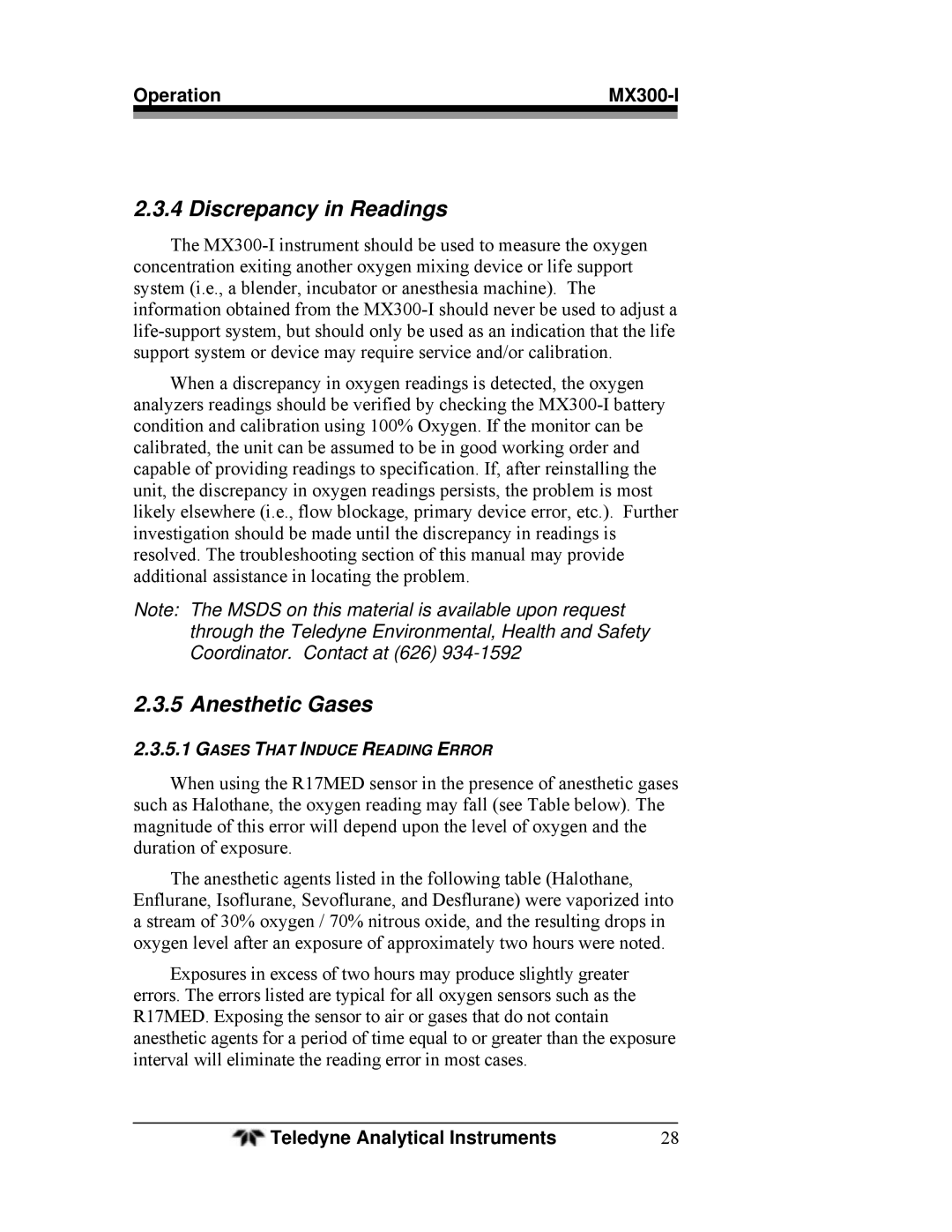Operation |
| |
|
|
|
2.3.4 Discrepancy in Readings
The
When a discrepancy in oxygen readings is detected, the oxygen analyzers readings should be verified by checking the
Note: The MSDS on this material is available upon request through the Teledyne Environmental, Health and Safety Coordinator. Contact at (626)
2.3.5 Anesthetic Gases
2.3.5.1GASES THAT INDUCE READING ERROR
When using the R17MED sensor in the presence of anesthetic gases such as Halothane, the oxygen reading may fall (see Table below). The magnitude of this error will depend upon the level of oxygen and the duration of exposure.
The anesthetic agents listed in the following table (Halothane, Enflurane, Isoflurane, Sevoflurane, and Desflurane) were vaporized into a stream of 30% oxygen / 70% nitrous oxide, and the resulting drops in oxygen level after an exposure of approximately two hours were noted.
Exposures in excess of two hours may produce slightly greater errors. The errors listed are typical for all oxygen sensors such as the R17MED. Exposing the sensor to air or gases that do not contain anesthetic agents for a period of time equal to or greater than the exposure interval will eliminate the reading error in most cases.
Teledyne Analytical Instruments | 28 |
